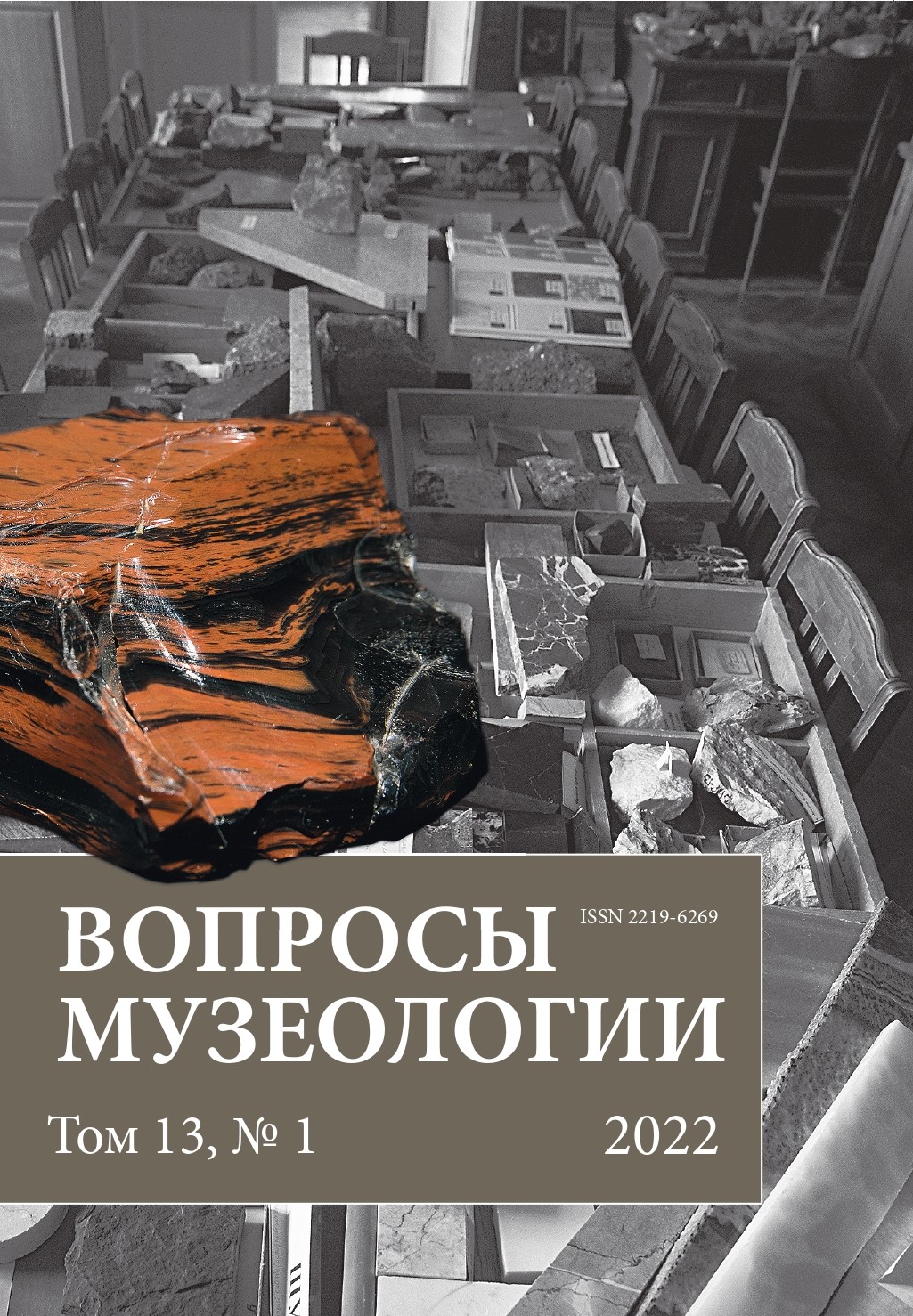The role of the discourse of museum collections in the distance course on the history of ancient civilizations
DOI:
https://doi.org/10.21638/spbu27.2022.105Abstract
Distance education is a hotly debated subject in the scientific and pedagogical environment of the newest period; in the methodological literature, issues of practical and theoretical nature are actively discussed (from the effectiveness of remote servers to ethical issues that arise during classes). As a positive experience, the article presents the materials of practical classes of the course “History of civilizations”, which is read by the author at St Petersburg State University of Industrial Technologies and Design, in a distance format as well. The material is built according to the problem-chronological principle, that allows students to consolidate what they have learned in lectures, supplement their knowledge using various visualization and illustration methods, thus deepening their understanding of the topic as a whole. An indirect appeal to historical sources is possible when analyzing monographic studies on the cultures of ancient ethnic groups, the 18-volume encyclopedia “Disappeared Civilizations”, and the content of the official websites of world museums that store the heritage of ancient civilizations. M.Montaigne in “Experiments” used the term ‘civilization’ (1581). Descartes in “Discourse on Methods” contrasted the concepts of “wild” and “civilized”; Herder was one of the first to connect civilization with the development of culture, pointing to the civilization of the East as the most ancient. In the 19th century, the concepts of “civilization” and “culture” were synonymous. In the 20th century, anthropological understanding of culture as a result of acquired behavioral skills began to be replaced by the concept of civilization. The article is devoted to a thematic review of individual historical monuments of a number of ancient civilizations, stored in various museums around the world, which can serve as illustrations for the educational discipline “History of Civilizations” in a distance format. The choice fell on some ancient “disappeared civilizations” that arose in various historical and geographical conditions.
Keywords:
civilization, ancient history, museum, collections, culture, distance learning
Downloads
References
Акатова В. (ред.). 1997. Индия: страна чудес / пер. И.Опимах. М.: Терра.
Афанасьева В.К. 1979. Гильгамеш и Энкиду. Эпические образы в искусстве. М.: Наука, Главная редакция восточной литературы.
Буряков В. (ред.). 1997а. Удивительные эгейские царства / пер. Т.Азаркович. М.: Терра.
Буряков В. (ред.). 1997б. Шумеры: города Эдема / пер. В.Хренова. М.: Терра.
Дьяконов И.М. 1983. История Древнего Востока. Зарождение древнейших классовых обществ и первые очаги рабовладельческой цивилизации. Ч.I.М.: Наука, Главная редакция восточной литературы.
Емельянов В.В. 2015. Гильгамеш. Биография легенды. М.: Молодая гвардия.
Клюева А. (ред.). 2003. Персы: властители империи. М.: ТОМ.
Лосева И.М. 1946. Искусство Древней Месопотамии: очерки. М.: Изд-во ГМИИ им. А.С.Пушкина.
Массон В.М. 1989. Первые цивилизации. Л.: Наука.
Оппенхейм А. 1990. Древняя Месопотамия. Портрет погибшей цивилизации / пер. М.Н.Ботвинника. М.: Наука, Главная редакция восточной литературы.
Рудик Н. 2017. Эпос о Гильгамеше. Памятники книжного эпоса Запада и Востока. М.: Инфра.
Силина М. 2013. Музей кикладского искусства (Афины). Серия: Великие музеи мира: 83. М.: Директ-Медиа.
Akatova V. (ed.). 1997. India: wonderland / transl. by I.Opimah. Moscow: Terra Publ. (In Russian)
Afanasieva V.K. 1979. Gilgamesh and Enkidu. Epic images in art. Moscow: Nauka Publ. (In Russian)
Buryakov V. (ed.). 1997a. Amazing Aegean kingdom / transl. by T.Azarkovich. Moscow: Terra Publ. (In Russian)
Buryakov V. (ed.). 1997b. Sumerians: the cities of Eden / transl. by V.Khrenov. Moscow: Terra Publ. (In Russian)
Dyakonov I.M. 1983. History of the Ancient East. The origin of the oldest class societies and the first centres of slave-owning civilization, vol. 1. Moscow: Nauka Publ. (In Russian)
Emelyanov V.V. 2015. Gilgamesh. Biography of the legend. Moscow: Molodaia gvardiia Publ. (In Russian)
Klyueva A. (ed.). 2003. Persians: rulers of the empire / transl. by T.Azarkovich. Moscow: TOM Publ. (In Russian)
Loseva I.M. 1946. The Art of Ancient Mesopotamia: Essays. Moscow: Pushkinskii Musei Publ. (In Russian)
Masson V.M. 1989. The first civilizations. Leningrad: Nauka Publ. (In Russian)
Oppenheim A. 1990. Ancient Mesopotamia. Portrait of a lost civilization, transl. by M.N.Botvinnik. Moscow: Nauka Publ. (In Russian)
Rudik N.The Epic of Gilgamesh. Pamiatniki knizhnogo eposa Zapada i Vostoka. Moscow: Infra Publ. (In Russian)
Silina M. 2013. Museum of Cycladic Art (Athens), Series: Great Museums of the World: 83. Moscow: DirectMedia Publ. (In Russian)
Downloads
Published
How to Cite
Issue
Section
License
Articles of "The Issues of Museology" are open access distributed under the terms of the License Agreement with Saint Petersburg State University, which permits to the authors unrestricted distribution and self-archiving free of charge.




